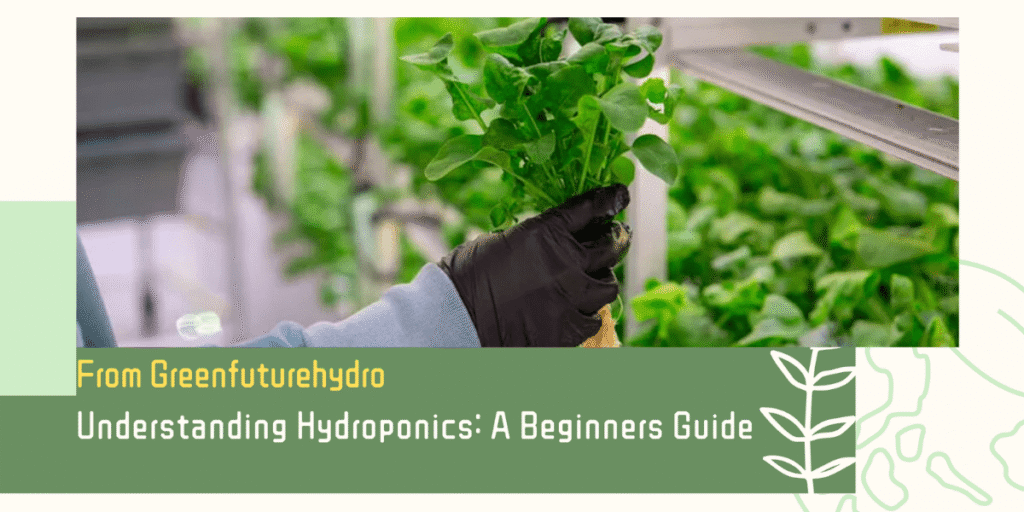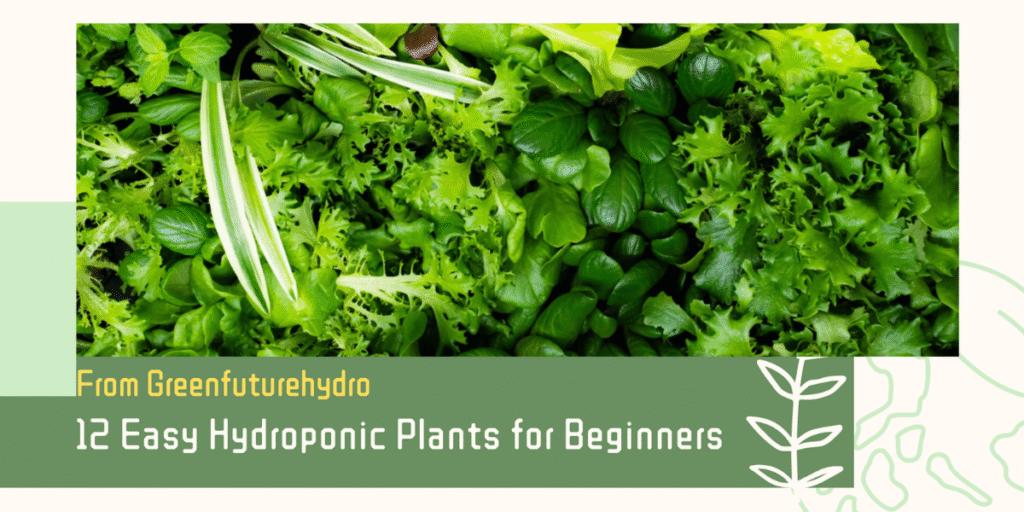Hydroponics is transforming the way we grow food without soil, without seasons, and without traditional space constraints. Whether you’re an urban gardener, a sustainability enthusiast, or simply someone who wants to grow fresh herbs at home, this beginner’s guide will walk you through the essentials of hydroponics and help you build a strong foundation for your growing journey.
In this guide, you’ll learn the fundamentals of hydroponics, explore different system types, discover the best plants for beginners, and understand the tools and tips that will set you up for success. We’ve also included practical insights and common troubleshooting advice that go beyond the basics.
Getting Started: What Is Hydroponics?
Hydroponics is a method of growing plants without soil. Instead, plants receive their nutrients through a water-based solution enriched with essential minerals. Their roots are either suspended directly in the nutrient-rich water or supported in an inert medium like coco coir or clay pebbles.
Why Grow Without Soil?
- Water efficiency – uses up to 90% less water than traditional soil farming
- Faster growth – direct nutrient access accelerates plant development
- Space-saving – ideal for urban environments and indoor growing
- Fewer pests and diseases – no soil-borne problems
- Year-round production – independent of seasonal changes
First-Time Grower Pitfalls
- Requires regular monitoring (pH, EC, water levels)
- Initial setup can be more expensive
- System failures (e.g., pump outages) can quickly harm plants
System Styles for New Growers
There’s no one-size-fits-all system—your choice depends on your goals, budget, and available space. Here are the most common hydroponic systems for beginners:
| System | Description | Best For |
|---|---|---|
| Kratky | A passive system with no pumps; plant roots hang in static nutrient solution | Beginners, leafy greens, herbs |
| Deep Water Culture (DWC) | Roots are submerged in oxygenated nutrient solution | Lettuce, basil, mint |
| Nutrient Film Technique (NFT) | A shallow stream of nutrients flows over plant roots | Lightweight plants like leafy greens |
| Drip System | Delivers nutrients to the base of each plant via drip emitters | Tomatoes, strawberries, peppers |
| Aeroponics | Roots are misted with nutrients in a highly oxygenated environment | Advanced growers, commercial systems |
Tip: Start with Kratky or DWC if you’re new—they’re low-cost and easy to manage.
Beginner-Friendly Crops to Grow
Some plants are more hydroponics-friendly than others. Here’s a list of beginner-friendly crops, along with their ideal conditions:
| Plant | pH Range | EC Range (mS/cm) | Growth Time |
|---|---|---|---|
| Lettuce | 5.5–6.5 | 0.8–1.2 | 30–40 days |
| Basil | 5.5–6.2 | 1.0–1.6 | 30–40 days |
| Coriander | 6.5 | 1.2–1.8 | ~50 days |
| Bok choy | 6.0–6.5 | 1.5–2.0 | 35–45 days |
| Strawberries | 5.5–6.2 | 1.4–1.8 | 60–90 days |
Beginner Tip: Avoid root vegetables or very tall crops at first—they require more structural support and maintenance.
Want more ideas on what to grow? Check out 12 Easy Hydroponic Plants for Beginners for a curated list of beginner-friendly crops.
Tools & Supplies for a Simple Setup
To get started, you’ll need a few core components:
| Item | Purpose | Notes |
|---|---|---|
| Nutrient Solution | Supplies all plant nutrients | Use balanced hydroponic A/B formulas |
| pH & EC Meters | Monitor solution balance | Digital pens are recommended |
| Air Pump & Stone | Provides oxygen to roots (DWC) | Keeps water from stagnating |
| Growing Containers | Hold plants and nutrient water | Use food-safe, opaque containers |
| LED Grow Lights | Supplemental light for indoors | Full-spectrum is best for growth |
Maintenance Tips:
- Calibrate meters monthly with standard solutions
- Change nutrient solution every 1–2 weeks
- Keep reservoirs shaded to prevent algae growth
Solving Common Growing Problems
Even with the best setup, beginners may face some challenges. Here are a few to watch for:
| Problem | Possible Cause | Solution |
|---|---|---|
| pH drifting | Water evaporation, nutrient imbalance | Adjust with pH up/down solutions, refresh water weekly |
| Root rot | Warm water, poor oxygenation | Add air pump, keep water under 22°C |
| Yellowing leaves | Nutrient deficiency or low light | Check EC, extend light duration |
| Algae growth | Light exposure to nutrient water | Use opaque containers or wrap reservoirs |
Pro Tip: Regular cleaning (every 2–3 weeks) prevents many of these issues before they start.
From Beginner to Confident Grower
Once you’re comfortable, consider scaling up your setup:
- Automate lighting and pumps with timers
- Grow vertically to save floor space
- Use multiple stages: seedling trays, main systems, harvest station
- Explore advanced systems like NFT or aeroponics for greater efficiency
And don’t forget to track your results logging pH, EC, and plant performance can help you refine your growing skills over time.
Wrapping Up Your Hydroponic Journey
Hydroponics may seem technical at first, but it’s an incredibly rewarding, efficient, and sustainable way to grow plants. Once you understand the basics,how plants absorb nutrients, how to monitor water quality, and what equipment to use,you’ll be well on your way to cultivating your own mini indoor farm.
Every expert grower once planted their first seed. Keep experimenting, stay curious, and enjoy the process of growing without soil.
Like this guide? Subscribe to our newsletter for more hydroponic tips, troubleshooting guides, and beginner-friendly project ideas.
Ready to take your hydroponic journey further? Let’s chat!
We regularly share practical hydroponic tips, handy system hacks, and easy auto-watering solutions on Greenfuturehydro.com and Instagram (@Greenfuturehydro) to help you grow with confidence, no matter your space or experience level.
Got questions about choosing the right system, setting up auto-watering, or creating your own desktop garden? Need expert guidance? our expert technical team is always ready to help.Plus, our expert technical team is always ready to provide personalized guidance whenever you need it.
🌱 Looking for beginner-friendly desktop hydroponic kits or simple auto-watering tools?
Check out our Products Page where we’ve handpicked gear perfect for small spaces and first-timers.


